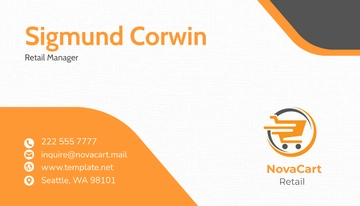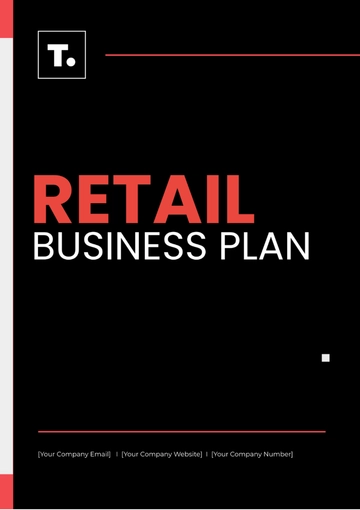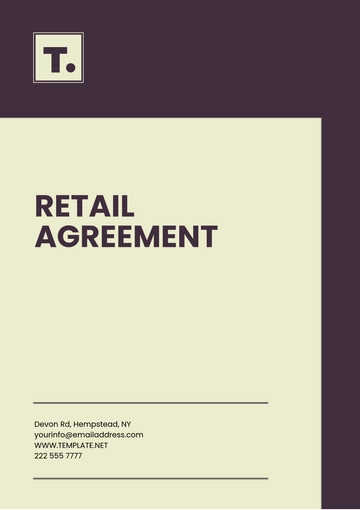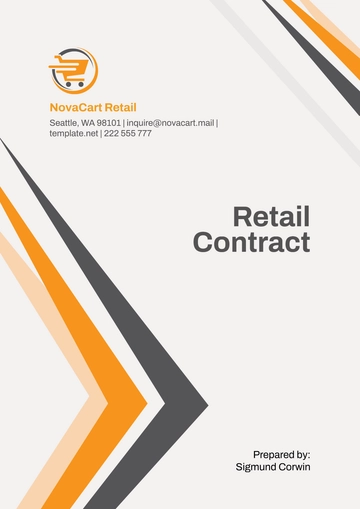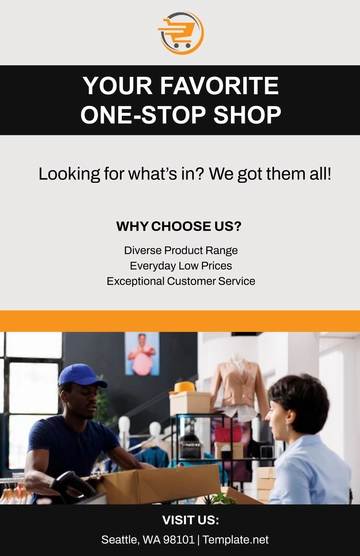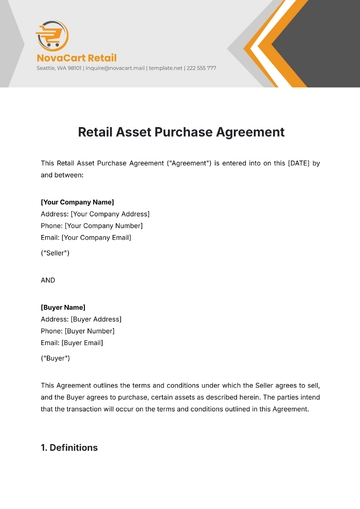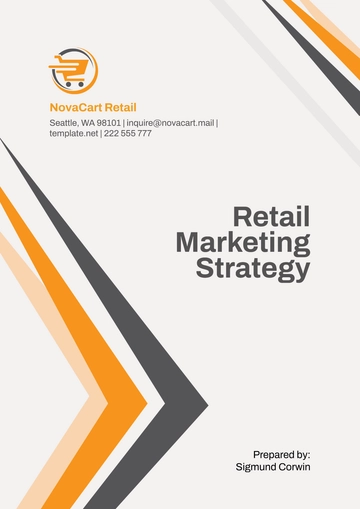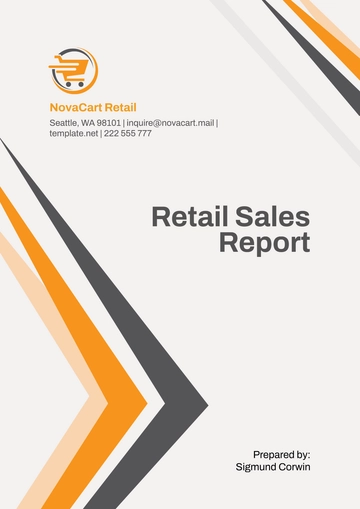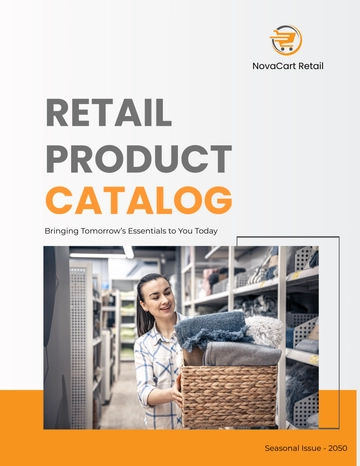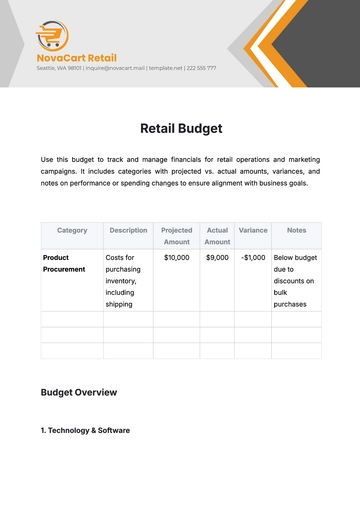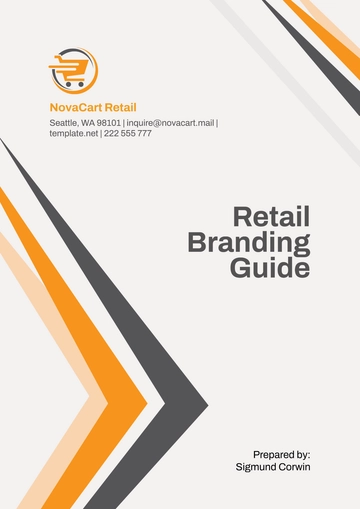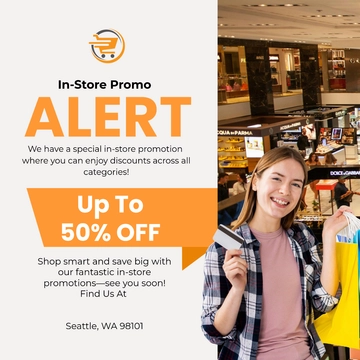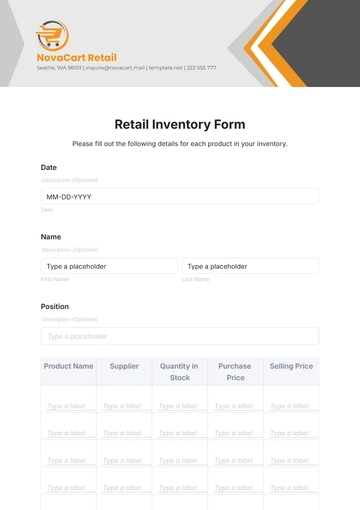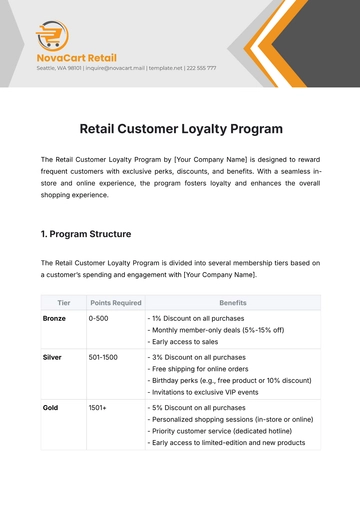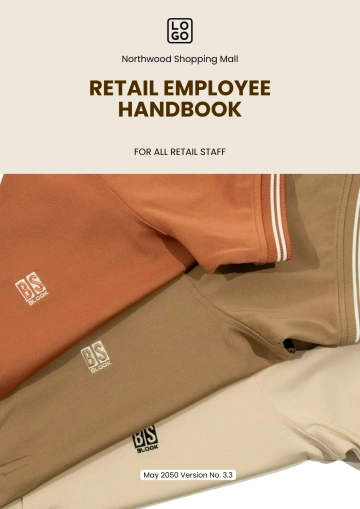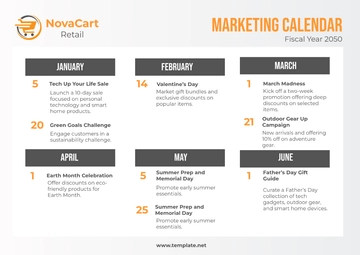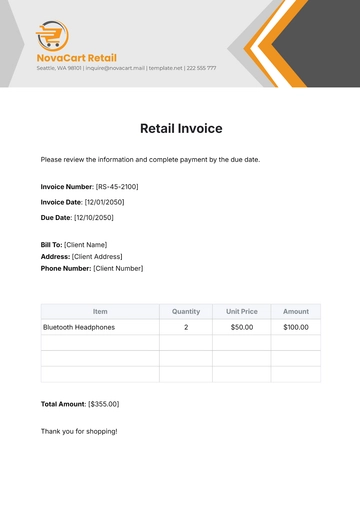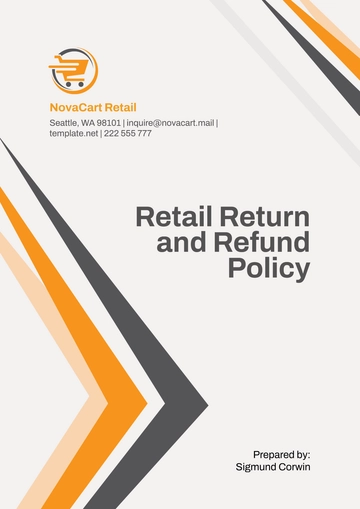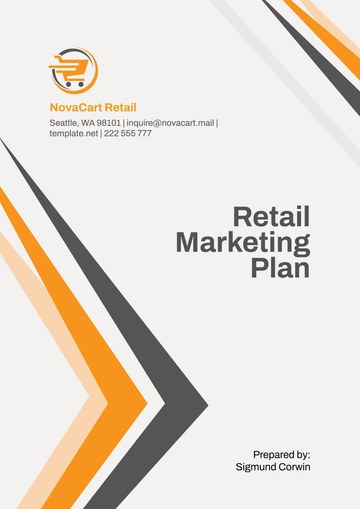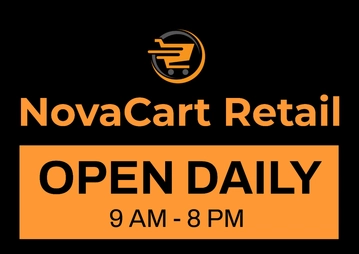Free Retail Marketing Strategy
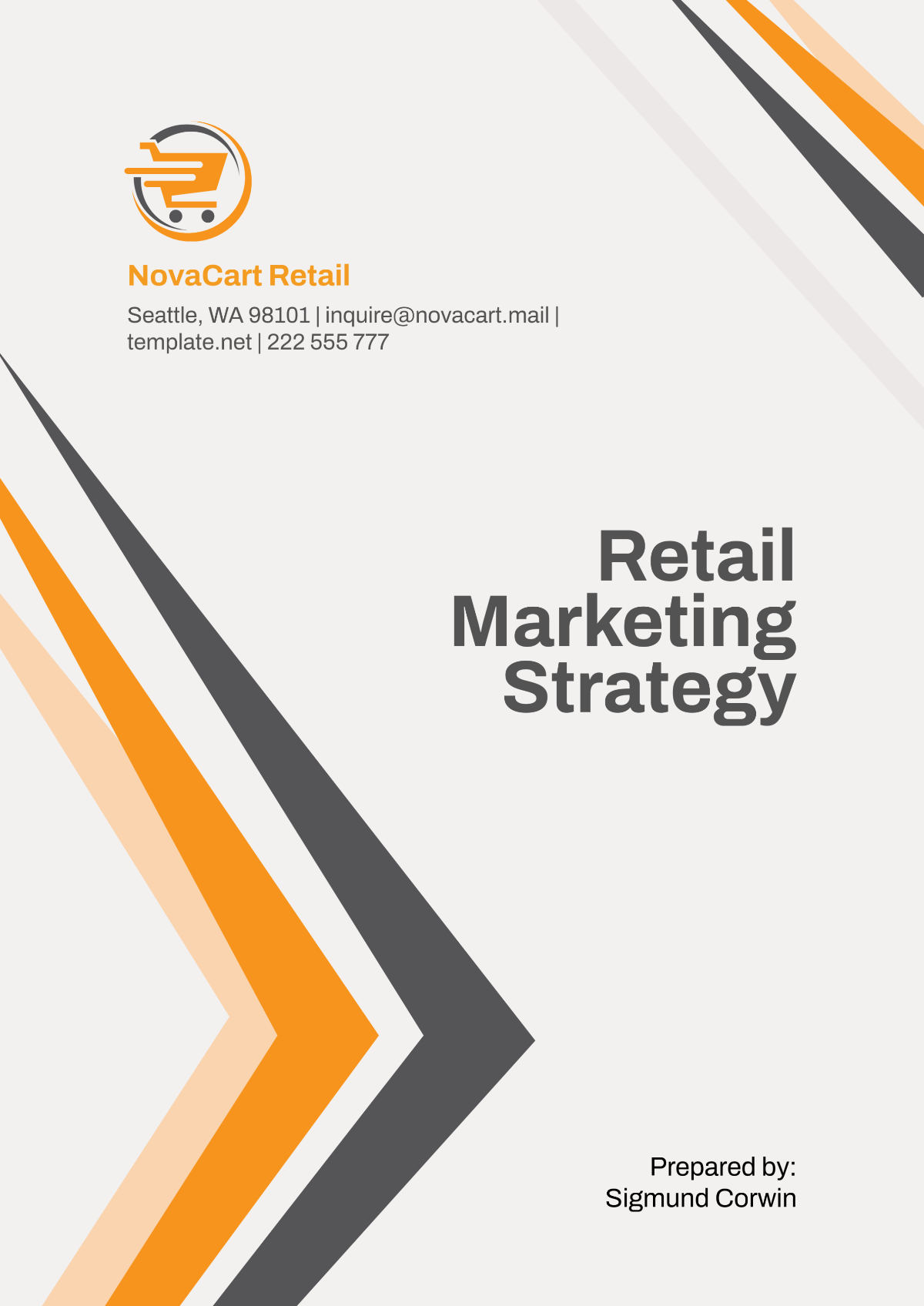
I. Introduction
Retail marketing has undergone significant transformations in recent years, driven by advancements in technology, shifts in consumer behavior, and changes in the global economy. As [Your Company Name] looks toward the future, particularly focusing on the years leading into 2050 and beyond, a strong retail marketing strategy is crucial for ensuring continued growth and market relevance. The company intends to build on its existing strengths, while also embracing innovation, sustainability, and customer-centric approaches to stay ahead of the competition. This strategy aims to balance traditional and digital marketing methods, creating a seamless omnichannel experience that resonates with a diverse and evolving customer base. By adopting a multi-faceted approach, [Your Company Name] can maintain a competitive edge, retain customer loyalty, and drive substantial growth year over year. In this document, we will outline our core strategies, objectives, KPIs, and implementation timelines to guide [Your Company Name]'s marketing efforts effectively through 2050.
II. Objectives
A. Primary Objectives
Increase Revenue: Achieving a growth target of [15%] annually will be a key focus. To meet this goal, the company will implement various strategies, including expanding its product range, improving customer engagement, and optimizing both online and offline sales channels. Consistent revenue growth will be achieved by tapping into new markets, increasing average transaction values, and maximizing conversion rates through personalized marketing efforts. Furthermore, improving operational efficiencies, refining supply chain processes, and exploring new revenue models, such as subscription services, will contribute to this target.
Brand Awareness: Building brand awareness by [30%] in key target markets is essential for ensuring that [Your Company Name] remains a top-of-mind choice among consumers. This objective will be supported by amplifying the company's presence on social media, participating in high-visibility partnerships, and increasing investments in targeted advertising. In addition, digital platforms such as YouTube, Instagram, and LinkedIn will play a crucial role in reaching and engaging with a broader audience, while PR efforts and influencer collaborations will help foster brand trust.
Customer Retention: Retaining existing customers is significantly more cost-effective than acquiring new ones, making it a priority for [Your Company Name]. By enhancing customer loyalty programs, offering personalized experiences, and investing in customer relationship management (CRM) tools, the company aims to improve retention by [20%]. A customer-centric approach will ensure that clients feel valued and heard, fostering long-term relationships that drive repeat business and referrals.
B. Secondary Objectives
Market Expansion: Expanding into [3] new regional markets will allow [Your Company Name] to diversify its revenue streams and establish a broader geographical presence. This will involve conducting detailed market research, understanding local consumer preferences, and tailoring marketing strategies to suit these new regions. The company will assess factors such as demographic trends, competitive landscapes, and logistics to determine the most viable markets for expansion.
Sustainability Goals: [Your Company Name] is committed to sustainability and aims to integrate these values across all aspects of its retail marketing. By aligning marketing messages with environmental initiatives, using sustainable packaging, and promoting eco-friendly product lines, the company plans to reduce its carbon footprint by [10%] by 2055. Incorporating sustainability into marketing campaigns not only attracts eco-conscious consumers but also positions the company as a responsible corporate entity in a world where sustainability is becoming an increasingly critical factor.
III. Target Market
A. Demographics
Age Range: The primary target market for [Your Company Name] consists of consumers aged [25–45 years old]. This demographic is typically characterized by individuals who have established careers, disposable income, and an inclination toward quality, convenience, and technological advancements. These customers are likely to value brands that offer a seamless blend of innovation, reliability, and style.
Income Bracket: [Your Company Name] targets middle- to high-income earners, with a focus on individuals earning a minimum of $[50,000] annually. These consumers often have the financial flexibility to make discretionary purchases, and they tend to invest in products and services that improve their quality of life, whether through better convenience, functionality, or lifestyle enhancement.
Occupation: The target market also includes professionals, entrepreneurs, and families, with a strong emphasis on those in leadership roles or owning businesses. These consumers are typically well-educated, value convenience, and are increasingly tech-savvy. They seek products that enhance their professional lives, well-being, and personal goals.
B. Psychographics
Lifestyle: Consumers within the target demographic are often health-conscious, environmentally aware, and tech-savvy. They prefer brands that align with their values and are willing to pay a premium for products that reflect these values. For example, products that promote sustainability or incorporate the latest technologies resonate strongly with this group.
Buying Behavior: This segment prefers shopping online, especially when it comes to convenience and time-saving. As such, a significant portion of [Your Company Name]'s marketing strategy will be focused on digital channels. These consumers are also more likely to remain loyal to brands that offer personalized experiences and rewards for continued patronage.
IV. Core Strategies
A. Product Strategy
Product Differentiation:
To ensure that [Your Company Name] stands out in a crowded marketplace, the company will focus on product differentiation. This includes offering exclusive product lines that cater to niche markets such as eco-conscious consumers or those seeking cutting-edge technological innovations. Unique packaging, superior materials, or one-of-a-kind design features will help reinforce product differentiation.
Seasonal Product Launches:
Product innovation will remain at the heart of [Your Company Name]'s strategy. The company will aim to release at least [4] new products annually, with seasonal launches that create excitement and anticipation. These limited-edition products, particularly during holidays and peak shopping seasons, can help drive impulse purchases and offer exclusivity to customers.
B. Pricing Strategy
Value-Based Pricing:
To ensure that products are priced effectively in relation to their value, [Your Company Name] will use value-based pricing models. This strategy involves setting prices based on the perceived value to the customer, rather than strictly on production costs. By understanding the unique needs and wants of its target audience, the company can position its products in a way that appeals to their sense of value, comfort, or prestige.
Promotional Discounts:
To drive short-term sales and increase customer acquisition, [Your Company Name] will run periodic sales campaigns, offering discounts ranging from [10%] to [50%]. These discounts will be timed around major holidays or product launches to maximize impact. Loyalty program members will receive exclusive discounts as part of their membership benefits.
C. Place Strategy
Physical Stores:
Physical retail stores will remain a cornerstone of the company's strategy. [Your Company Name] plans to open [5] new locations in high-traffic urban areas by 2055, providing an in-person shopping experience that caters to customers who prefer tactile engagement with products. Store layouts will be redesigned to create an immersive experience that integrates technology, personalized assistance, and a comfortable environment.
E-Commerce Expansion:
The growth of e-commerce remains a top priority. In addition to upgrading the website to include features like AI-driven product recommendations and virtual shopping assistants, [Your Company Name] will explore partnerships with leading online marketplaces, such as Amazon, to increase product visibility and reach. This will also help tap into new customer segments who primarily shop through online channels.
D. Promotion Strategy
Digital Marketing:
[Your Company Name] will allocate a significant portion of its budget to digital marketing initiatives. The company will focus on paid search advertising, display ads, and social media campaigns, which together will make up [60%] of the overall marketing budget. These platforms provide measurable results and are essential for engaging with a highly targeted audience.
Traditional Marketing:
Despite the dominance of digital channels, traditional marketing methods, such as billboards, print ads, and direct mail, will still play a role in reinforcing the brand’s presence in regional markets. Local print ads, particularly in niche lifestyle magazines or local newspapers, will reach demographics who still rely on offline sources of information.
V. Implementation Plan
A. Timeline
Year | Milestone | Description |
|---|---|---|
2050 | Digital Campaign Overhaul | A complete overhaul of digital marketing strategies, including AI integration and new social media platforms. |
2051 | Sustainability Branding | Introduce a line of eco-friendly products and eco-conscious branding strategies. |
2052 | Regional Market Expansion | Begin store openings in 3 new cities, expanding our national presence. |
2055 | AI Integration | Full integration of AI-based recommendation engines into the retail experience, both online and in-store. |
B. Budget Allocation
Category | Allocated Budget | Percentage |
|---|---|---|
Digital Marketing | $1,500,000 | 60% |
Physical Stores | $700,000 | 28% |
Product Innovation | $300,000 | 12% |
VI. Key Performance Indicators (KPIs)
A. Sales Metrics
Quarterly Revenue Growth: Aiming for a [15%] quarter-over-quarter increase, sales targets will be monitored closely to ensure that monthly and quarterly goals are achieved. By tracking and optimizing key sales channels, the company can identify high-performing regions and adjust strategies accordingly.
Average Order Value (AOV): The average transaction value is expected to grow over time, with a target of $[120] by 2052. This will be achieved by optimizing product bundles, offering cross-selling and upselling opportunities, and implementing strategic pricing models.
B. Customer Metrics
Customer Retention Rate: The company aims to improve retention rates by [20%], using enhanced loyalty programs, personalized offers, and high-quality customer service. These initiatives will encourage repeat business and increase lifetime customer value.
Net Promoter Score (NPS): Maintaining an NPS score of [80+] will demonstrate that customers not only appreciate the products and services but are also willing to recommend them to others. Regular feedback loops, surveys, and social listening will help monitor and improve this score.
C. Digital Metrics
Click-Through Rates (CTR): The goal is to achieve a CTR of [8–10%] across all digital ad campaigns. This will be closely monitored through A/B testing and optimization of ad copy, creative, and targeting strategies.
Website Conversion Rate: Increasing conversion rates from [3%] to [6%] by optimizing user experience, simplifying checkout processes, and offering personalized recommendations will be a key focus.
VII. Marketing Channels
A. Digital Marketing
Search Engine Optimization (SEO):
The SEO strategy will focus on optimizing every page on [Your Company Name]'s website, using high-traffic, relevant keywords to increase organic search rankings. By investing in backlink strategies, creating high-quality content, and ensuring mobile optimization, the company can boost visibility in search engine results.Social Media Marketing:
Engaging customers through platforms such as Instagram, TikTok, and LinkedIn is key to building a community around the brand. Interactive content such as polls, giveaways, and user-generated content will be encouraged to boost engagement levels.Email Marketing:
By segmenting its email list and sending personalized offers, [Your Company Name] aims to improve open rates and engagement. Offering exclusive discounts and first looks at new products will keep the email list warm and encourage repeat visits.
B. Offline Marketing
Community Events:
Hosting in-store events will provide an opportunity to meet customers face-to-face and showcase new products. Partnering with local charities and organizations will build goodwill and position [Your Company Name] as a community-oriented brand.Billboards and Print Ads:
Strategic placements of billboards in high-traffic locations will serve as brand reinforcement, while print ads in targeted publications help to reach audiences who prefer traditional media. Print ads will highlight seasonal offers, product launches, or store openings.
VIII. Case Study Projections
This case study outlines a hypothetical scenario to illustrate the potential effectiveness of the marketing strategy over the next several years.
A. Scenario Overview
Company: [Your Company Name]
Market: Expansion into a new regional market (e.g., Southern California)
Time Frame: [2050–2053]
In this scenario, [Your Company Name] has identified Southern California as a prime market for expansion. The company’s strategy involves opening [5] new retail locations while simultaneously enhancing its digital presence in the region. The goals for this market are:
Increase sales by [15%] annually.
Achieve a minimum of [10%] market share within the first [3] years.
Build brand awareness in the region, with a target of a [25%] increase in local consumer recognition by [2053].
Year 1: Initial Launch
In the first year, the primary focus will be on building brand awareness and establishing a strong physical presence. The store openings will be paired with localized digital marketing campaigns that target residents of Southern California. The company will utilize a combination of:
Traditional advertising through regional magazines and billboards.
Social media campaigns with hyper-localized content, including influencer collaborations with local figures.
Grand opening events featuring giveaways, limited-time discounts, and community-focused partnerships with local businesses.
By focusing on local partnerships and engaging with regional influencers, [Your Company Name] will create a buzz in the area. Digital ads will be tailored specifically to Southern California residents, promoting the store openings and emphasizing the company’s commitment to offering high-quality, locally relevant products.
Expected Results:
Increased foot traffic to new stores by [20%] during the first quarter.
Strong digital engagement, with social media followers in the region increasing by [30%] over the course of the year.
Achieve [10%] of the region’s total market share by the end of Year 1.
Year 2: Building on Momentum
By Year 2, the focus will shift toward leveraging the initial awareness gains. This phase will include:
Expanding the product offering to include regionally popular items based on customer feedback and market research.
Enhancing the loyalty program with rewards tailored to regional preferences, offering special discounts for repeat customers and cross-promotional opportunities with other local brands.
Strengthening online sales in the region through targeted digital campaigns (such as retargeting ads for visitors to the website) and exclusive online product drops.
To reinforce customer loyalty, [Your Company Name] will introduce a regional ambassador program where local figures help amplify the brand’s values and products.
Expected Results:
A continued increase in store traffic, with an additional [10%] boost in foot traffic in Year 2.
Online sales in the region to make up [15%] of total sales.
Achieve a regional customer retention rate of [25%].
Year 3: Full Market Penetration
In Year 3, [Your Company Name] will have established itself as a strong player in the Southern California market. The strategy will focus on:
Cross-selling products through personalized recommendations in both online and offline channels.
In-store experiences that integrate augmented reality (AR) and virtual reality (VR) to make shopping interactive and immersive. For example, customers could virtually try on products or get more information about their environmental impact through AR on their smartphones.
Deepening partnerships with local events such as sports teams or festivals to further entrench the brand in the community.
Additionally, [Your Company Name] will introduce an eco-friendly product line specifically designed for the California market, capitalizing on the growing trend of sustainability in the region.
Expected Results:
Sales growth of [18%] in the region, with an overall market share of [18%].
Online sales continuing to grow, making up [20%] of total revenue in the region.
Enhanced customer loyalty, with a [40%] retention rate.
Year 4 and Beyond: Brand Leadership
By Year 4, the company will be well-established in the region, and the focus will shift to sustaining growth and establishing [Your Company Name] as the market leader. The company will:
Develop exclusive collaborations with high-profile regional brands and influencers.
Increase community engagement through sustainability initiatives, such as tree-planting programs or waste-reduction campaigns in partnership with local environmental organizations.
Enhance customer personalization through AI-driven shopping experiences both in-store and online.
As the company solidifies its position as a market leader, it will start looking at other potential regional markets for expansion.
Expected Results:
Market share reaching [25%] in Southern California.
Consistent annual sales growth of [15%].
A strong local brand reputation with recognition among [70%] of the region’s target audience.
IX. Challenges and Risk Mitigation
As with any comprehensive retail marketing strategy, there are inherent challenges and risks that must be addressed to ensure long-term success. Below are the primary risks and our mitigation plans.
A. Supply Chain Disruptions
Risk: Global supply chain issues may lead to delays in product delivery, which could impact both physical store stock levels and e-commerce fulfillment.
Mitigation Strategy:
Diversify suppliers by partnering with multiple vendors for key products to reduce dependence on any single supply chain.
Implement AI-based forecasting systems to predict demand and optimize inventory management. This will help in ensuring that products are available when customers need them, even during periods of disruption.
Increase in-house production capacity for high-demand products to avoid reliance on third-party manufacturers.
B. Competitive Pressure
Risk: Competitors may intensify their marketing efforts or offer lower prices, making it difficult for [Your Company Name] to maintain market share.
Mitigation Strategy:
Emphasize differentiation by continually introducing innovative products that meet customer needs in ways competitors cannot. This includes exclusive product lines and customer-tailored experiences.
Strengthen customer loyalty programs by offering unique incentives for repeat buyers and engaging with customers on a personal level.
Monitor competitive activity and adapt pricing strategies to ensure that [Your Company Name] remains competitive without sacrificing margins.
C. Changing Consumer Preferences
Risk: Shifting consumer tastes and attitudes, particularly among younger generations, could render current products or marketing methods obsolete.
Mitigation Strategy:
Conduct regular market research to stay ahead of evolving trends and quickly adapt to changing preferences. Use customer feedback and sentiment analysis to continuously refine product offerings and marketing messaging.
Leverage influencer marketing to maintain relevance among younger audiences, ensuring that the company stays attuned to the cultural trends that matter most to these consumers.
Diversify product offerings to cater to a broader range of consumer needs, including eco-friendly, health-conscious, and tech-driven products.
D. Economic Recession
Risk: Economic downturns may lead to reduced consumer spending, affecting overall sales.
Mitigation Strategy:
Focus on value-oriented products to meet the needs of consumers who are looking to cut costs during tough economic times. Offer promotional discounts and bundle deals to keep customers engaged and loyal.
Emphasize digital sales channels, which tend to perform better during recessions as consumers often prefer the convenience and value of online shopping.
Continue to build customer loyalty so that during times of economic hardship, existing customers will continue to choose [Your Company Name] over competitors due to established relationships.
X. Conclusion
[Your Company Name] is well-positioned to capitalize on the evolving landscape of retail marketing through 2050 and beyond. By implementing a comprehensive strategy that spans product innovation, digital transformation, targeted customer acquisition, and market expansion, the company can achieve its growth objectives and establish itself as a leader in both existing and new markets. The focus on sustainability, technological advancements, and personalization will continue to drive brand relevance, ensuring that [Your Company Name] not only survives but thrives in an increasingly competitive and fast-evolving marketplace.
As we embark on this journey, the key to success will lie in maintaining flexibility and adaptability, responding to market changes swiftly, and continuously refining our strategies to meet the evolving needs of our customers. With a solid foundation and a customer-centric approach, [Your Company Name] is poised to redefine the future of retail marketing in the years to come.
- 100% Customizable, free editor
- Access 1 Million+ Templates, photo’s & graphics
- Download or share as a template
- Click and replace photos, graphics, text, backgrounds
- Resize, crop, AI write & more
- Access advanced editor
Develop an effective marketing strategy for your retail business with the Retail Marketing Strategy Template. Editable and customizable via Template.net, this template lets you create a tailored plan for promoting your products and driving traffic. With the AI Editor Tool, you can adjust it to suit your goals, making it the perfect tool for any retail marketing campaign.
